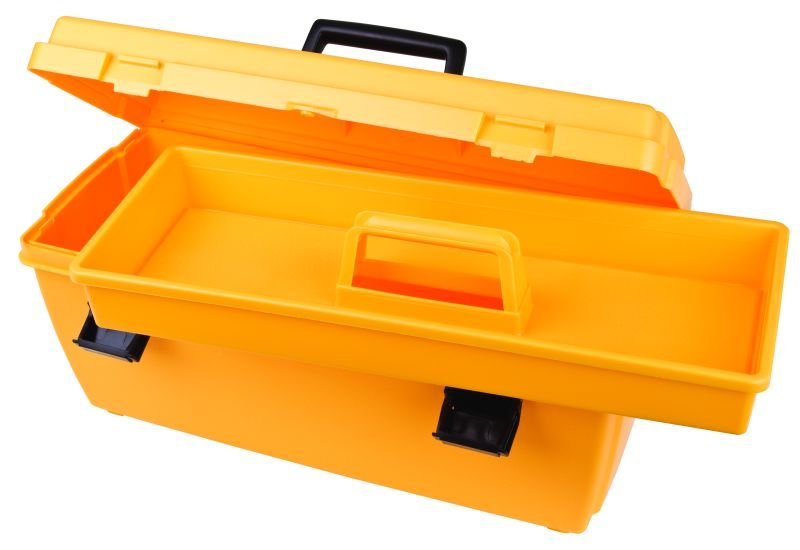How to Fix Your Plastic Toolbox Lock
A plastic toolbox is an essential item for many DIY enthusiasts, professionals, and hobbyists. It helps keep tools organized, secure, and easily accessible. However, over time, the lock on your plastic toolbox may become damaged or stop functioning properly. In this guide, we will discuss common issues with plastic toolbox locks and provide step-by-step instructions on how to fix them.
Common Issues with Plastic Toolbox Locks
- Broken or Jammed Lock Mechanism
A lock can break or jam due to regular wear and tear or the accumulation of dirt and debris inside the mechanism. This can prevent the lock from turning or engaging properly.
- Misplaced or Bowed Keys
Misplacing keys or twisting them can make it incomprehensible to open the bolt. Bowed keys may still fit into the bolt but will not turn or lock in the locking instrument.
- Misaligned Bolt Components
Over time, components of the bolt may gotten to be misaligned due to harsh dealing with or affect, making it troublesome or outlandish to bolt or open the toolbox.
Tools and Materials Needed
Screwdriver (Phillips or flat-head, depending on the screws used)
Lubricant (such as WD-40)
Replacement bolt instrument (on the off chance that necessary)
Pliers
Needle-nose pincers (for accuracy work)
Tweezers (discretionary, for dealing with little components)
New keys (in case required)
Step-by-Step Direct to Settling Your Plastic Tool kit Lock
Step 1: Evaluate the Damage
Before endeavoring any repairs, carefully assess the bolt to recognize the issue. Check if the key is bowed, the bolt is stuck, or if there are any unmistakable signs of harm to the bolt component. Understanding the issue will offer assistance you decide the best course of activity.
Step 2: Clean the Lock Mechanism
Dirt and debris can accumulate inside the lock, causing it to jam. Use a lubricant like WD-40 to clean and lubricate the lock. Spray a small amount of lubricant into the keyhole and around the locking mechanism. Insert the key and gently turn it to work the lubricant into the lock. Repeat this process several times to ensure the lock is thoroughly cleaned and lubricated.
Step 3: Rectify Bowed Keys
If the key is bowed, utilize pincers to carefully fix it. Put the key on a level surface and tenderly apply weight with the pincers to twist it back into shape. Be cautious not to apply as well much constrain, as this might break the key. Once the key is straight, test it in the bolt to see if it capacities properly.
Step 4: Realign Bolt Components
If the bolt components are misaligned, you may require to open the tool compartment and get to the bolt instrument. Utilize a screwdriver to expel any screws securing the bolt in put. Carefully dismantle the bolt and review the inside components. Utilize needle-nose pincers to realign any misaligned parts. Reassemble the bolt and test it to guarantee it works accurately.
Step 5: Supplant the Bolt Mechanism
If the bolt is broken or seriously harmed, you may require to supplant it completely. Buy a substitution bolt component that is consistent with your plastic tool stash. Take after these steps to supplant the lock:
Remove the Ancient Bolt: Utilize a screwdriver to expel any screws holding the ancient bolt in put. Carefully dismantle the bolt and evacuate it from the toolbox.
Install the Unused Bolt: Embed the modern bolt component into the assigned opening on the tool stash. Secure it in put with screws, making beyond any doubt it is appropriately adjusted and working smoothly.
Test the Unused Bolt: Embed the unused key into the bolt and test it to guarantee it locks in and disengages the locking instrument properly.
Step 6: Anticipate Future Issues
To avoid future issues with your plastic tool kit bolt, routinely clean and grease up the bolt instrument. Maintain a strategic distance from constraining the key if it doesn’t turn effectively, as this can cause harm. Store your tool kit in a dry, cool put to avoid rust and erosion from influencing the bolt.
Conclusion
Fixing a plastic toolbox lock can be a straightforward process if you follow these steps. By assessing the damage, cleaning the lock mechanism, straightening bent keys, realigning lock components, or replacing the lock entirely, you can restore the functionality of your toolbox and keep your tools secure. Regular maintenance will help prevent future issues and ensure your toolbox remains in good working condition.














Post Comment